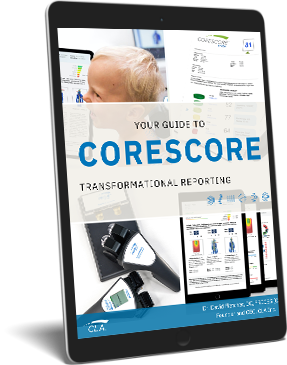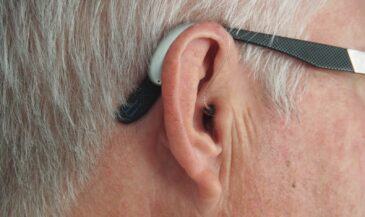It’s the culmination of the clinical impression combined with the time and frequency “equation” of scheduled care and the financial arrangements. What if we were to re-engineer this process and do as Steven Covey recommends and “Begin with the end in mind”. What if we oriented our entire culture of the practice to ensure that the care plan was the ultimate expression of our chiropractic model? Perhaps we need to look at another real world example and see how well it has worked out.
Hands up if you have had braces on your teeth or been the parent of kids with braces. Orthodontists run amazing care plan-oriented practices that are based on the undeniable truth that they can virtually guarantee their desired outcomes. Straightening teeth takes many different strategies but the one consistency in all approaches is that it takes time!
Let’s look at their practice positioning and see if they are consistent with chiropractic models of care. Orthodontists are originally trained as dentists; at the same time it’s unlikely you would call up an orthodontist if you had a toothache. You know that they are the experts in long term outcomes that align teeth and restore function to the jaw and other oral structures. Chiropractors are trained in spinal biomechanics but there is a role that we play by focusing directly on the performance of the nervous system. A neurologically focused chiropractor is more related to the orthodontist than the dentist because the changes and outcomes associated with retraining neurological performance takes time.
The great news is that whichever path you choose in positioning your practice, you will be using neuroplastic principles to get the lasting results everyone is looking for. Not so long ago, it was commonly perceived that once neurological function was lost, it was gone for goof, or so we thought. Along came the science and the discovery of neuroplasticity and the entire care planning model changed away from rehabilitation towards rehabituation. The new goal wasn’t limited to improved biomechanics, it now became all about locking in new habits in the neurological pathways and this was accomplished because the nervous system was found to be incredibly adaptive and “plastic” vs. rigid. We could go down a deep bunny hole and explore the science of neuroplasticity but from a care planning perspective it’s incredibly easy to understand.
Neuroplasticity is based on 2 parameters: Time and Repetition. The very same principle that guides the development of a care plan!
Remember the mic drop moment when we started this discussion? What would it look like in your practice if spinal symptoms and spinal dysfunction and even wellness and performance were based on the quality of the signal management within the nervous system?
What if a broken down nervous system could be retrained to perform better and even fantastically if only we applied chiropractic adjustments using the neuroplastic principles of Time and Repetition?
Let’s call it neuroplastic care planning!
You can see how important a comprehensive care plan is for their wellbeing. This neuroplastic care planning moves your practice into the ‘orthodontic’ realm where shifts are more significant that symptom management and wellness and performance are measured instead of only being discussed.
How the INSiGHT increases credibility
In an earlier Blog post, I shared that my first transformative moment came when I knew that I could stand by my recommendations because I was using objective data to track the shifts in the spine and the nervous system.
The INSiGHT became the centrepiece of my exam and reports.
The second part of that transformation occurred when I applied the neuroplastic principles of time and repetition to my care plans and trusted the innate intelligence of the patient to use the adjustments wisely and perfectly to reorganise both structures and function. Again, the INSiGHT allowed me to track intricate changes and adaptive responses.
A sage once asked, ‘How do you eat an elephant’? The answer is simple; ‘One bite at a time’.
Care planning is just like that.
It begins with a giant intention or goal and if we tackle it one task at a time we can get it accomplished. Like all great journeys, it’s critical to have road signs to measure the distance of where you have been and give you a distance to your destination. These road signs are critical in setting goals and in confirmation as to how well the journey is progressing. You may have guessed it already but the road signs in a care plan are the re-exams and the reports.
The INSiGHT creates a series of CORESCORE reports specifically to highlight the changes from one exam to the next and uses comparative graphs.
There is a logical sequence of reports that give an objective number score with each report. The report is called a CORESCORE and is akin to a road sign that gives a number score representing progress along the patient’s journey. The exam to exam bundle of care is a bite of the elephant and the road signs keep the traveller inspired and informed. How big a bite?
Follow the Rule of 12
As I was blending the time/repetition principles with the necessity of road signs, I came up with a strategy known as the Rule of 12. It’s used almost universally now since each ‘bite’ care plan uses a 12 visit model to schedule a re-exam and updated report. That means:
- Every 12th visit an INSiGHT scan exam is scheduled with a progress or comparative report set for the ‘13th’ or next visit.
- The time it takes to schedule the repetition of 12 sequentially timed visits accomplishes the neuroplastic component while the goal setting of eating the elephant is always communicated and present as part of the rule of 12.
- There is an added dimension when using the Rule of 12. It is designed to give forward direction to the plan.
- If the first 12 visits can be reviewed to see how the person is responding to early care then the first 12 weeks is a time frame where structural and functional testing can be included to ensure there is a deeper change occurring.
- Twelve months from the first adjustments allows for a different set of parameters to measure performance.
- Imagine what you can accomplish in 12 years!
The Rule of 12 inspires, informs and allows strategic implementation, all within the neuroplastic care plan that you designed and are getting handsomely paid to manage.





























































































































































